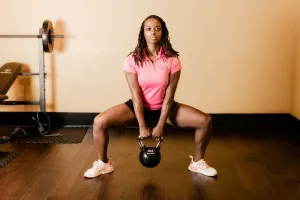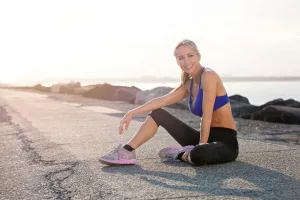Staying active is essential for maintaining health and well-being at any age, but it becomes especially important as we grow older. Regular physical activity not only helps to maintain physical health, strength, and flexibility, but it also promotes mental health, reduces the risk of chronic diseases, and improves overall quality of life. However, the types of physical activities that older adults engage in may need to be adapted to ensure they are safe, enjoyable, and beneficial.
Fortunately, there are plenty of age-appropriate sports and physical activities that cater to different levels of mobility and fitness. Whether you are looking for gentle exercises to improve flexibility or more engaging activities to stay fit and social, here are some of the best options for older adults.
1. Walking
Walking is one of the most accessible and beneficial forms of physical activity for older adults. It requires no special equipment, can be done almost anywhere, and provides a great cardiovascular workout. Walking is an excellent way to maintain mobility, strengthen muscles, improve balance, and promote heart health. Additionally, walking outdoors provides the added benefits of fresh air and exposure to nature, which can boost mental well-being.
Why It’s Beneficial: Walking helps maintain cardiovascular health, improves joint mobility, and can reduce the risk of conditions such as high blood pressure, diabetes, and heart disease. It is also a low-impact activity that minimizes stress on the joints.
Tips for Starting:
Start with short walks and gradually increase the duration and intensity as your fitness level improves. You can also make walking a social activity by joining a walking group or going for walks with friends and family.
2. Swimming and Water Aerobics
Swimming is an excellent low-impact sport that offers a full-body workout. It’s particularly beneficial for older adults because it minimizes strain on the joints while improving cardiovascular fitness, strength, and flexibility. The buoyancy of the water reduces pressure on joints, making it ideal for individuals with arthritis or joint pain. Water aerobics, which involves performing exercises in the water, is another great way to improve strength, flexibility, and coordination in a low-impact environment.
Why It’s Beneficial: Swimming and water aerobics are gentle on the body but highly effective in building endurance, improving balance, and enhancing overall fitness. The resistance provided by water helps build muscle strength without causing wear and tear on the joints.
Tips for Starting:
Look for local community centers or gyms that offer swimming pools or water aerobics classes specifically designed for older adults. Start with gentle exercises and build up to more vigorous routines as your fitness improves.
3. Yoga
Yoga is a highly beneficial physical activity for older adults as it combines gentle stretching, balance training, and mindfulness. Yoga improves flexibility, strength, and balance, which are critical components of healthy aging. Additionally, yoga has mental health benefits, helping to reduce stress, anxiety, and promote relaxation. Yoga can be adapted to different fitness levels and physical abilities, making it an excellent choice for older adults.
Why It’s Beneficial: Yoga enhances flexibility, strengthens muscles, improves posture, and helps with balance, which reduces the risk of falls. It also promotes mental clarity and mindfulness, contributing to overall emotional well-being.
Tips for Starting:
Consider joining a beginner’s yoga class or a yoga class specifically for seniors. Chair yoga is a great option for those with limited mobility, as it allows you to perform many poses while seated or using a chair for support.
4. Tai Chi
Tai chi is an ancient Chinese martial art that focuses on slow, controlled movements, deep breathing, and mindfulness. It is particularly beneficial for older adults because it improves balance, coordination, and flexibility while promoting relaxation and reducing stress. Tai chi’s slow, gentle movements make it ideal for individuals of all fitness levels, including those with mobility issues.
Why It’s Beneficial: Tai chi is known to improve balance and reduce the risk of falls, a common concern for older adults. It also enhances flexibility and muscle strength, while its meditative aspects help alleviate stress and anxiety.
Tips for Starting:
Look for local classes or online tutorials focused on tai chi for beginners or seniors. Start with basic moves and gradually advance as you gain confidence and coordination.
5. Cycling
Cycling, whether on a stationary bike or a traditional bicycle, is another excellent cardiovascular exercise for older adults. It provides a low-impact way to improve heart health, build leg strength, and boost stamina. Stationary cycling offers the added benefit of being done indoors, making it accessible year-round and safe from outdoor hazards. For those who enjoy outdoor cycling, electric bikes (e-bikes) offer additional support and can make cycling easier on the body.
Why It’s Beneficial: Cycling improves cardiovascular fitness, enhances leg strength, and promotes joint health without placing excessive pressure on the knees and hips. It’s a great way to build endurance and maintain mobility.
Tips for Starting:
Start with short, easy rides and gradually increase your distance and speed. If cycling outdoors, choose safe routes like bike paths, or if balance is a concern, consider using a stationary bike or recumbent bike.
6. Golf
Golf is a low-impact sport that provides moderate exercise and is perfect for older adults who enjoy spending time outdoors. It involves walking, swinging, and bending, which helps improve flexibility, balance, and coordination. Additionally, golf offers a social aspect, allowing players to interact and engage with friends or fellow players, which can contribute to emotional well-being.
Why It’s Beneficial: Golf helps improve balance, coordination, and flexibility. Walking the course also provides cardiovascular benefits and can help strengthen leg muscles.
Tips for Starting:
If you’re new to golf, consider taking beginner lessons to learn the basics of the game. Walking the course instead of using a golf cart can increase the physical benefits, but start slow and take breaks as needed.
7. Dancing
Dancing is a fun, engaging, and versatile form of exercise that can benefit both the body and mind. Whether you enjoy ballroom dancing, line dancing, or even Zumba, dancing provides a cardiovascular workout, improves balance and coordination, and boosts mood. It also helps sharpen memory and cognitive function by learning and remembering dance steps, making it a great activity for brain health.
Why It’s Beneficial: Dancing improves cardiovascular fitness, enhances balance and coordination, and promotes cognitive health by stimulating memory and mental focus. It’s also a fun way to stay active and socialize with others.
Tips for Starting:
Consider joining a dance class, whether it’s a ballroom, line, or salsa dancing group, specifically geared toward older adults. Choose a style of dance that you enjoy and can engage in regularly to maximize the physical and social benefits.
8. Strength Training
Strength training is important for maintaining muscle mass and bone density as we age. It can be done using bodyweight exercises, resistance bands, or light free weights. Strength training improves overall physical function, enhances mobility, and reduces the risk of falls by strengthening muscles around the joints. In addition, it can help alleviate symptoms of arthritis by improving muscle tone and reducing pressure on the joints.
Why It’s Beneficial: Strength training helps prevent muscle loss, supports bone health, and improves balance and posture, reducing the risk of injury from falls. It also enhances mobility and increases independence in daily activities.
Tips for Starting:
Start with light weights or resistance bands and focus on proper form. Work with a fitness instructor or physical therapist to develop a strength-training program tailored to your abilities and goals.
9. Bowling
Bowling is another fun, low-impact sport that promotes physical activity while allowing older adults to socialize with friends or family. It involves walking, swinging, and bending, all of which contribute to better coordination, balance, and muscle strength. Bowling is also great for cognitive health, as it requires focus, strategy, and hand-eye coordination.
Why It’s Beneficial: Bowling improves hand-eye coordination, balance, and flexibility. It’s also a low-stress way to stay physically active while enjoying the social benefits of group activities.
Tips for Starting:
Join a local bowling league for seniors or simply enjoy a casual game with friends or family. Bowling offers both physical and social benefits, making it a well-rounded activity for older adults.
10. Pickleball
Pickleball is a fast-growing sport that combines elements of tennis, badminton, and ping-pong. It’s played on a smaller court with a paddle and a lightweight ball, making it an accessible option for older adults. Pickleball provides a moderate cardiovascular workout, enhances agility, and improves coordination. It’s also a fun and social sport, often played in doubles, which allows players to stay active while engaging with others.
Why It’s Beneficial: Pickleball improves cardiovascular fitness, coordination, and agility. Its smaller court size and slower pace make it ideal for older adults who want to stay active without the intensity of traditional sports.
Tips for Starting:
Check if your local community center or sports facility offers pickleball courts or beginner lessons. Start with short games and gradually build up your endurance as you improve your skills.
Conclusion
There are countless sports and physical activities that older adults can enjoy while promoting both physical and mental health. From gentle exercises like walking, swimming, and yoga to more active sports like pickleball and golf, staying physically active can enhance overall well-being, improve mobility, and reduce the risk of chronic diseases. Whether you’re looking to improve cardiovascular health, build strength, or simply enjoy some social interaction, these age-appropriate activities offer plenty of opportunities to stay healthy, active, and engaged well into your golden years.




